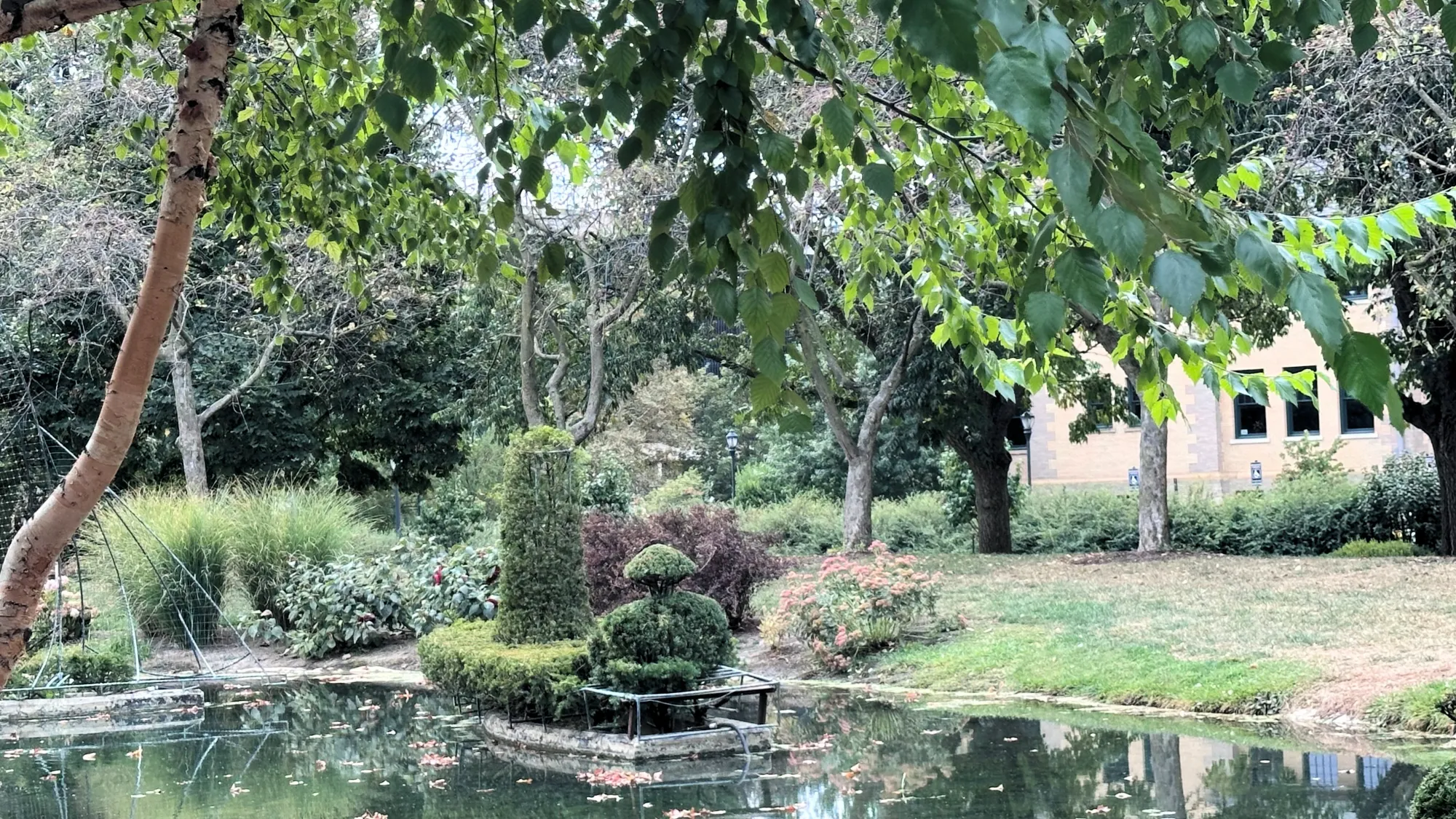
Topiary Garden at Old Deaf School Park, Columbus, Ohio
Trail Map
Click the map to enable zoom.
Elevation Profile
Elevation data not available for this trail.
Topiary Park is a 9.2-acre public park and garden in Columbus, Ohio's Discovery District. The park's topiary garden, officially the Topiary Garden at Old Deaf School Park, is designed to depict figures from Georges Seurat's 1884 painting. A Sunday Afternoon on the Island of La Grande Jatte. It is the only park based entirely on a painting.
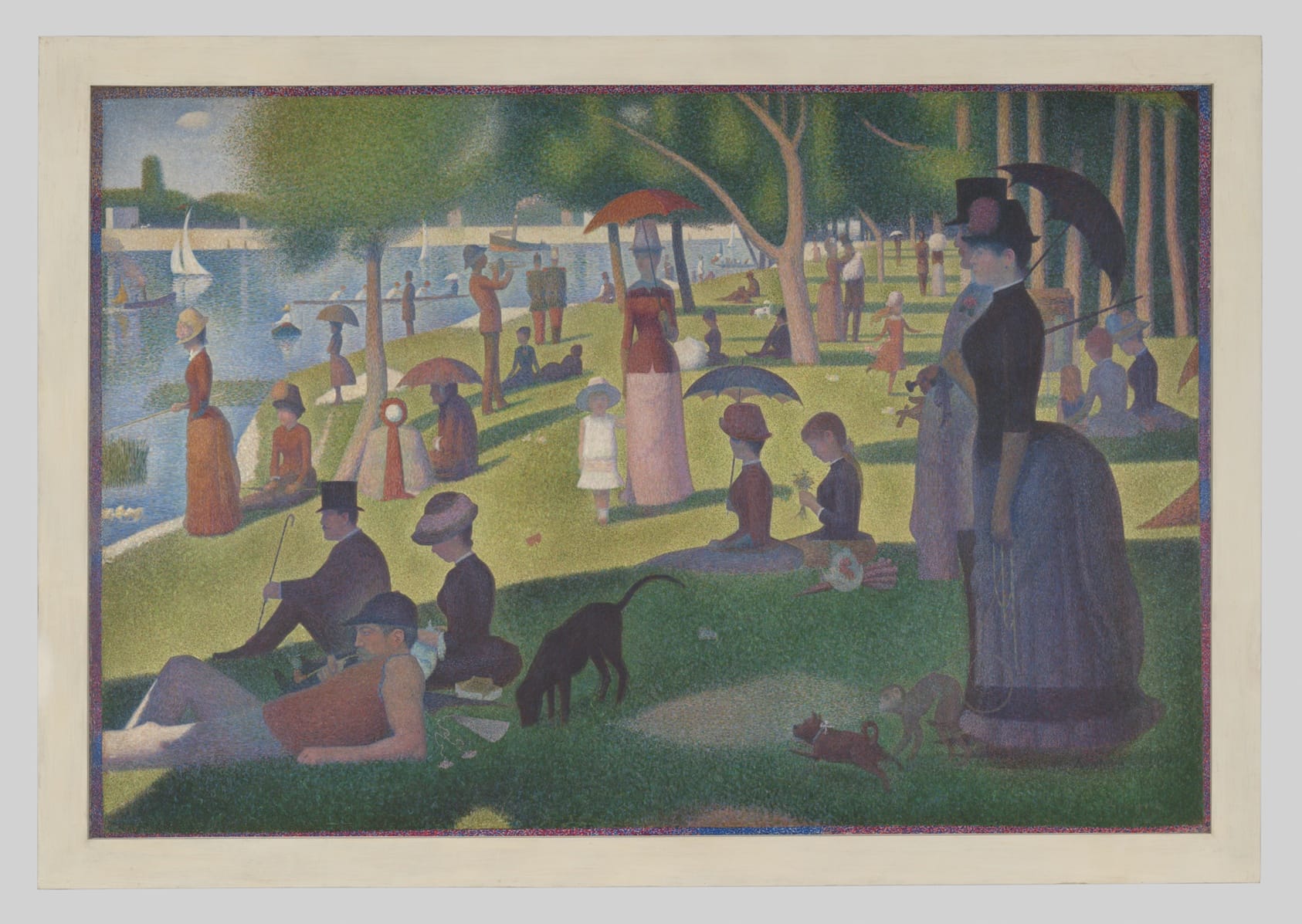
The park is officially named Old Deaf School Park, as it was part of the campus of the Ohio Institution for the Deaf and Dumb, known today as the Ohio School for the Deaf. It is owned by the city of Columbus and maintained by the Columbus Recreation and Parks Department.
It is located in downtown Columbus. It features topiaries trimmed into life-size shapes of men, women, children, animals, and boats and arranged to resemble a painting. Specifically, there are topiaries of 54 people, eight boats, three dogs, a monkey, and a cat. It also hosts 220 trees, including 35 different species. A cast-iron fence surrounds the space.
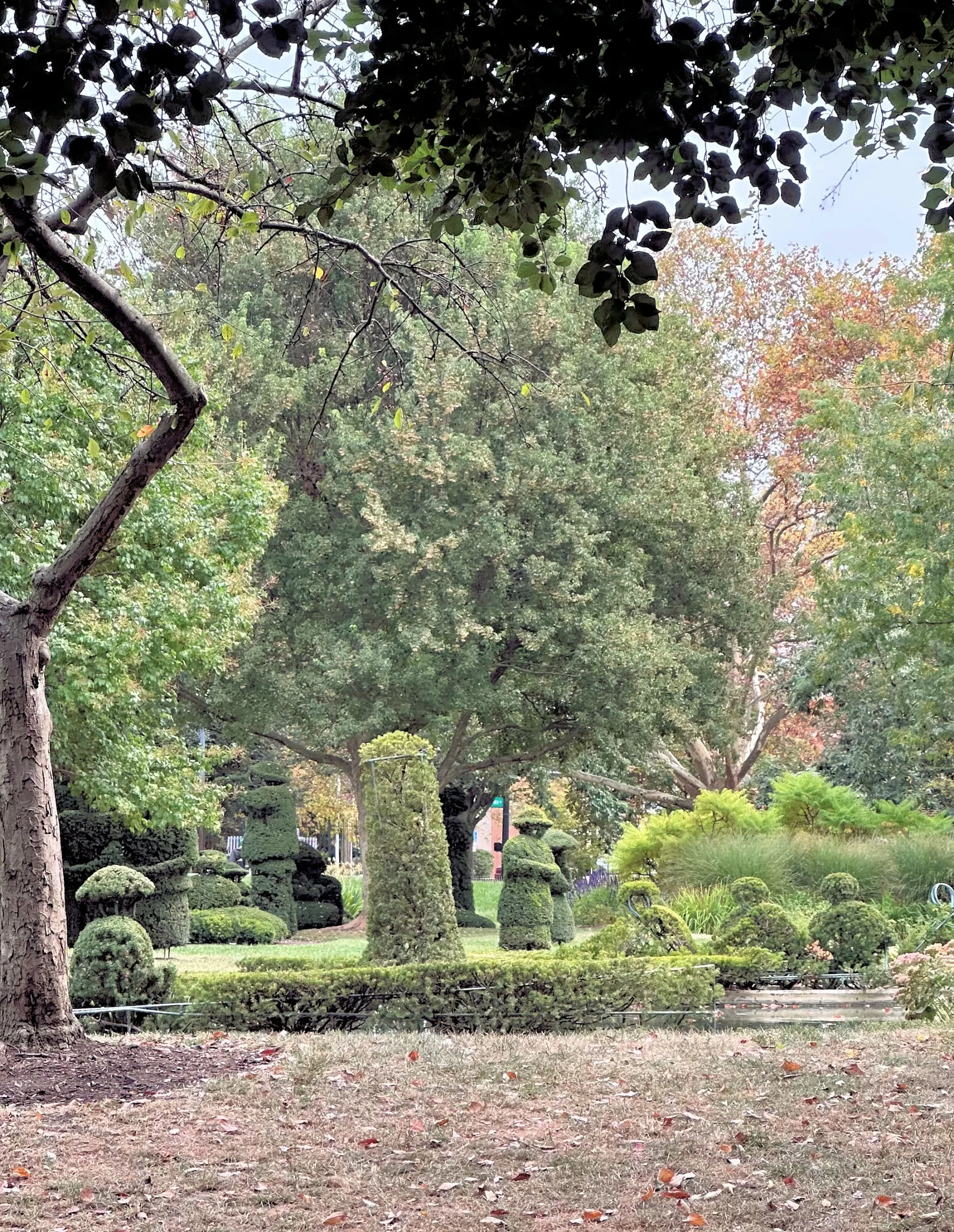
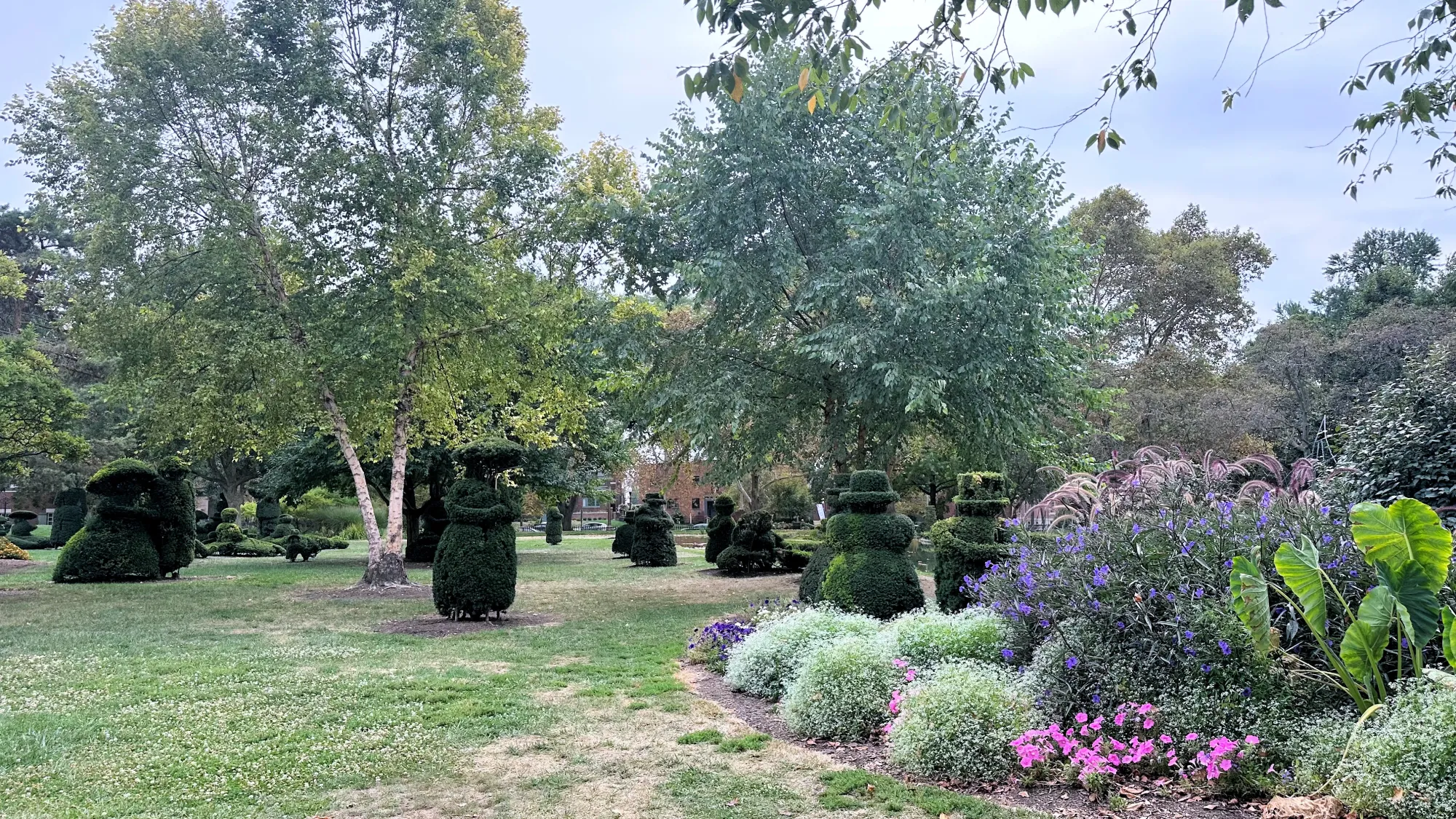
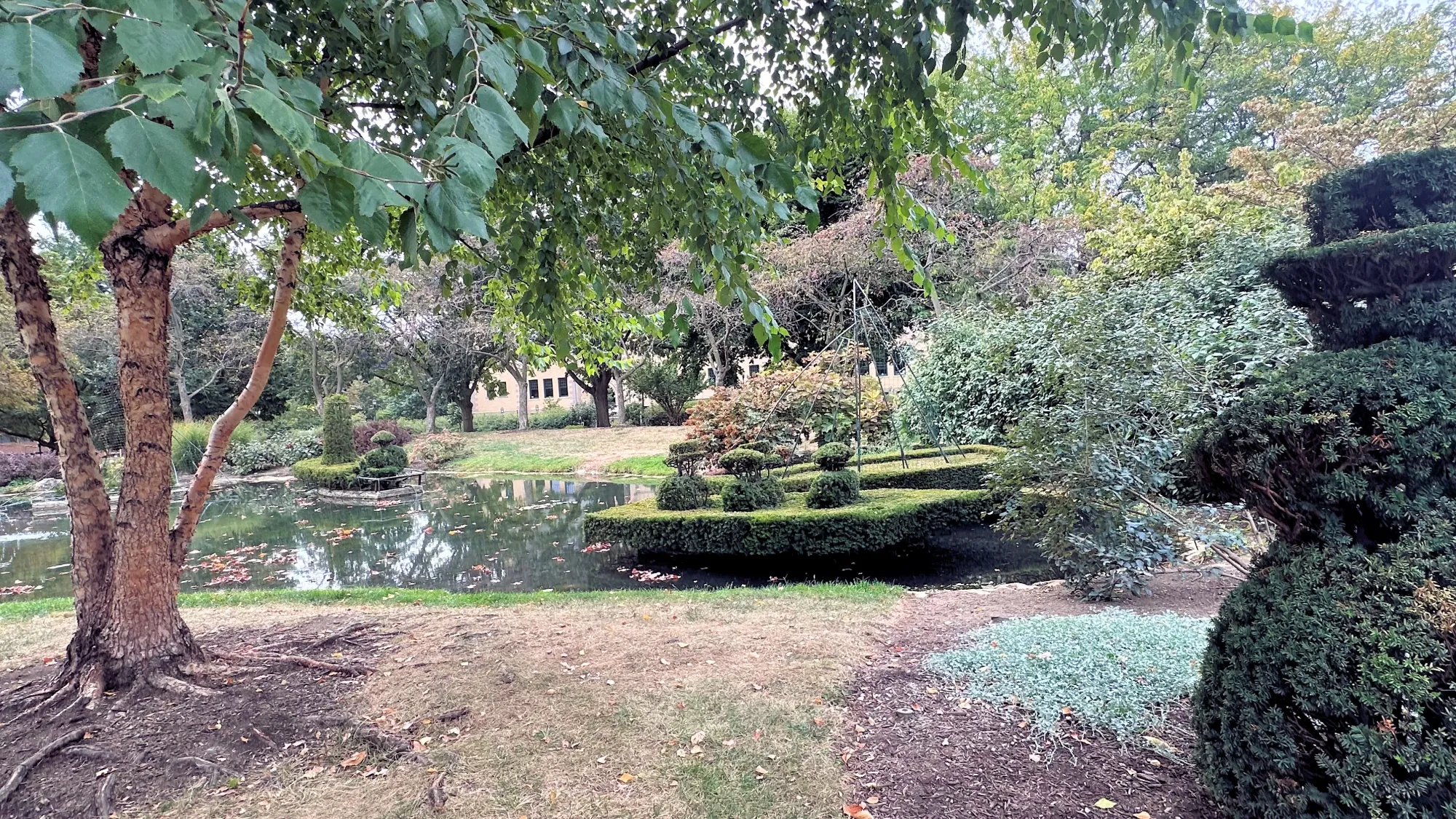
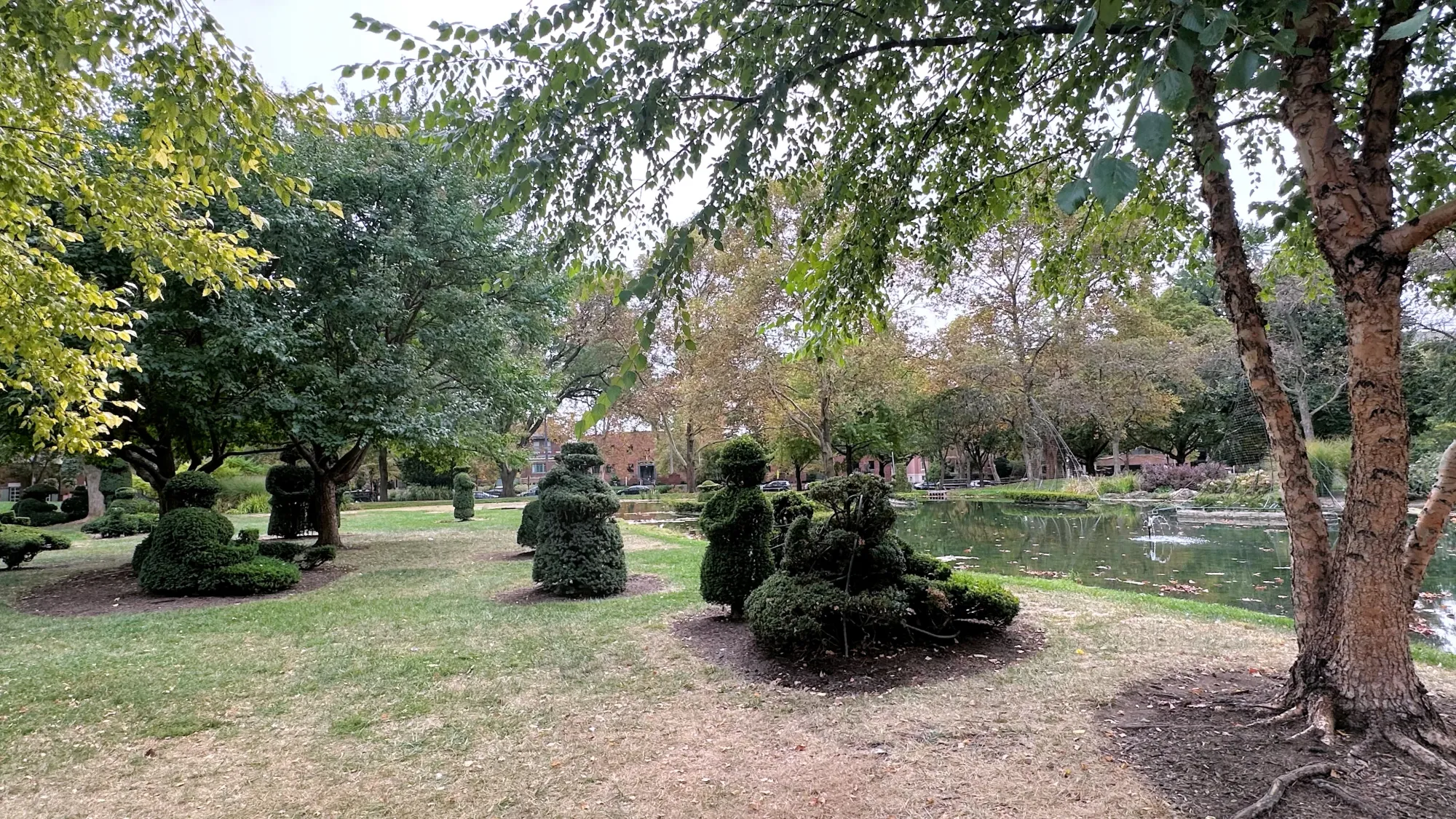
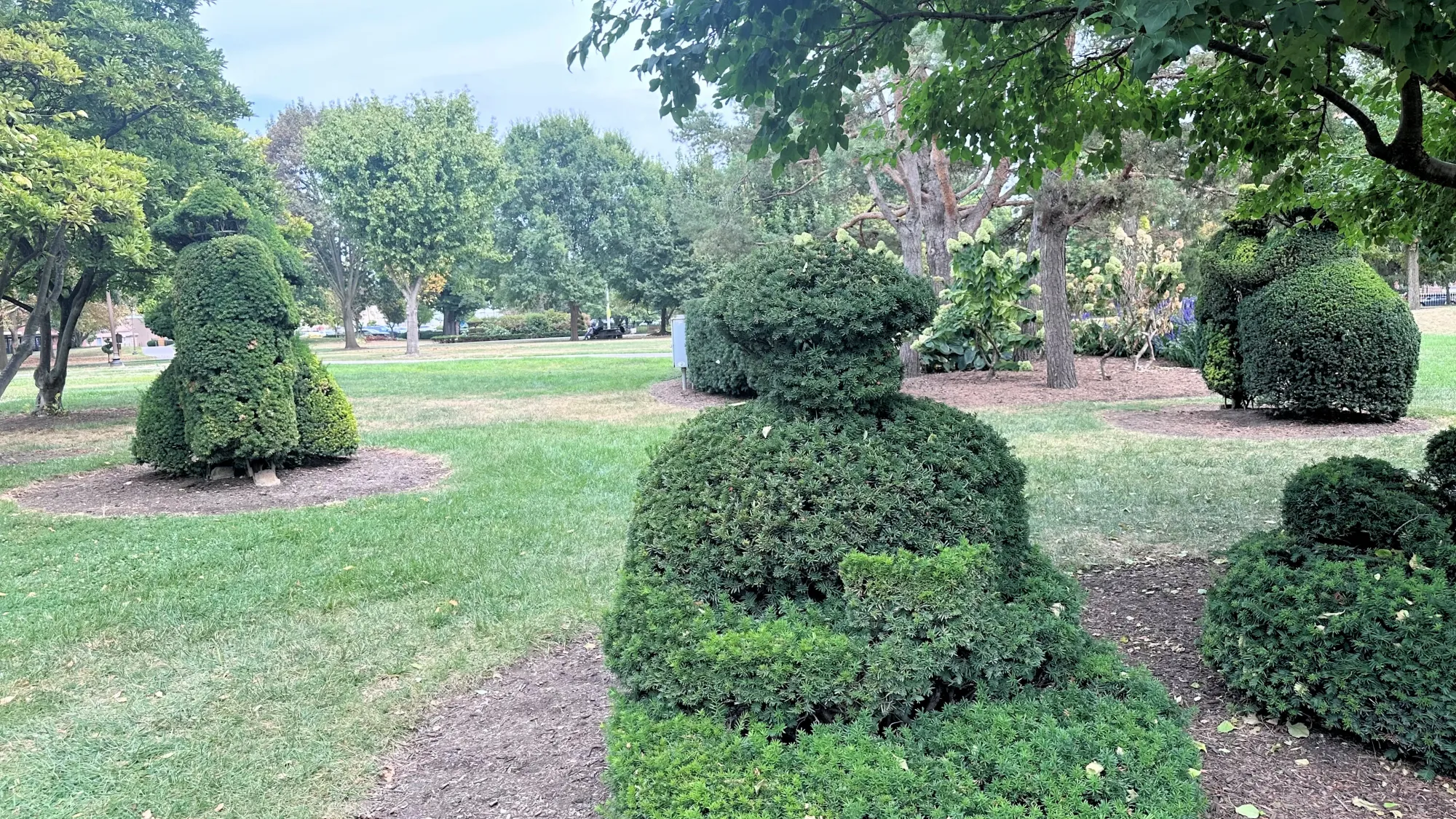
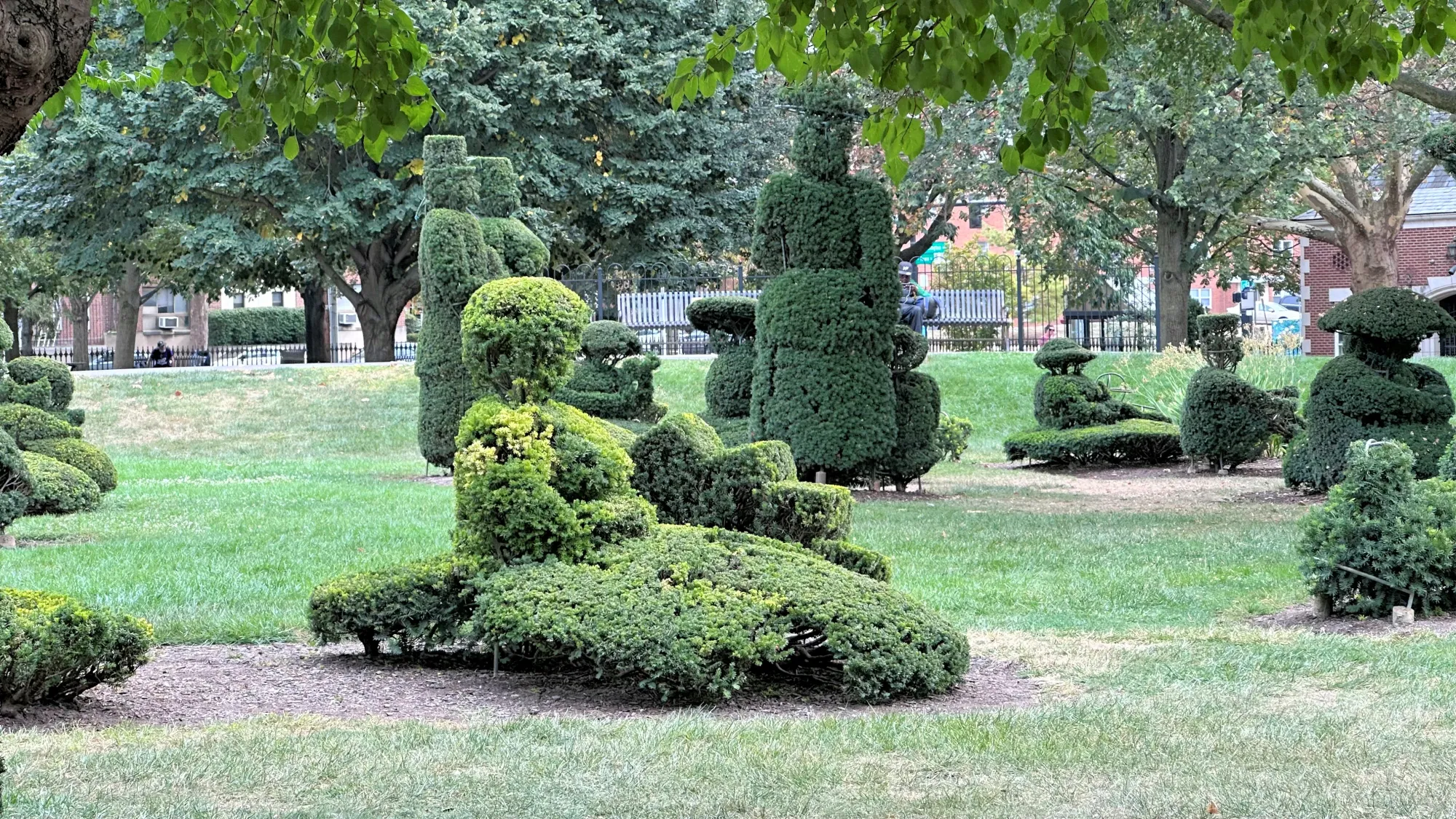
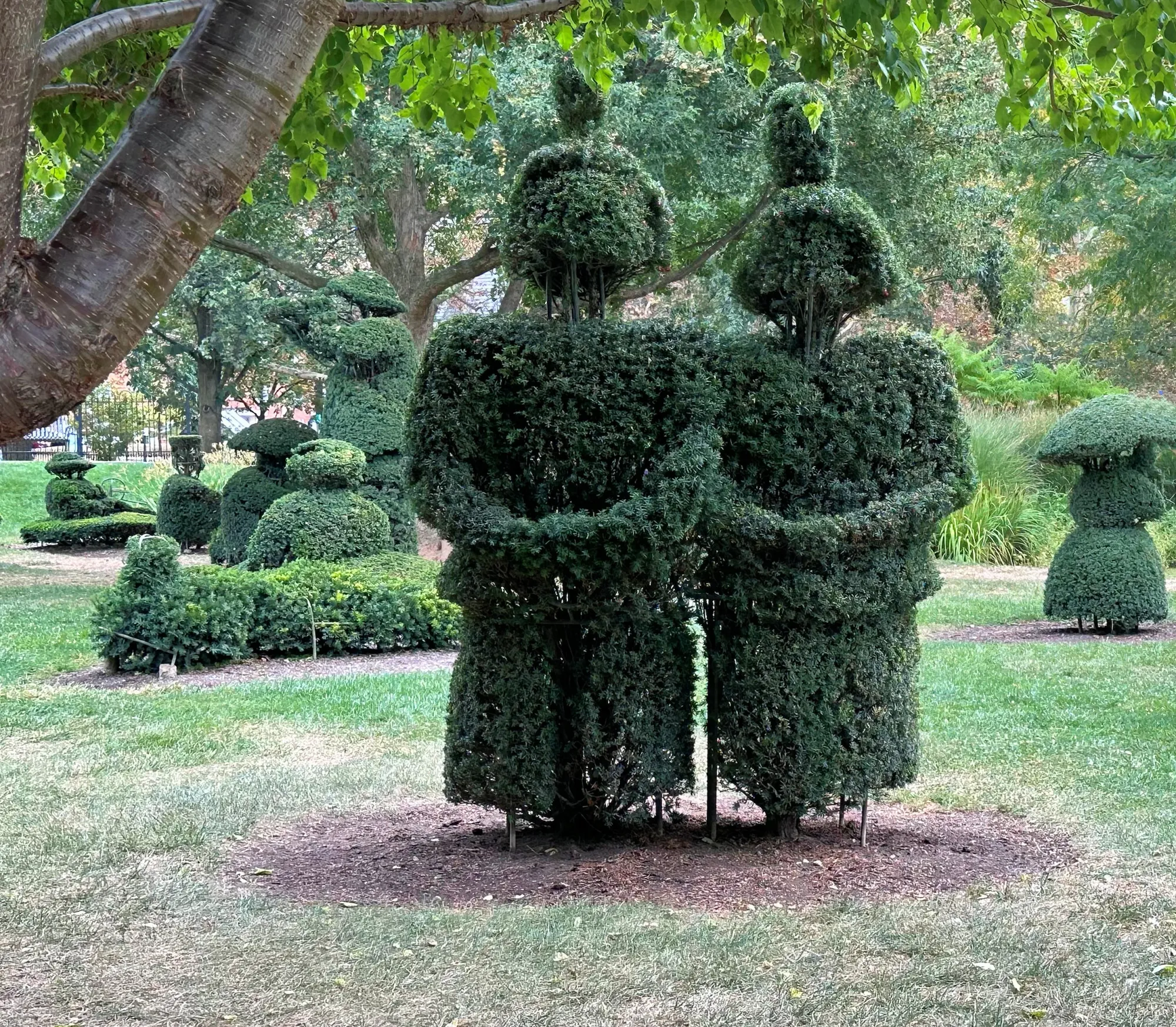
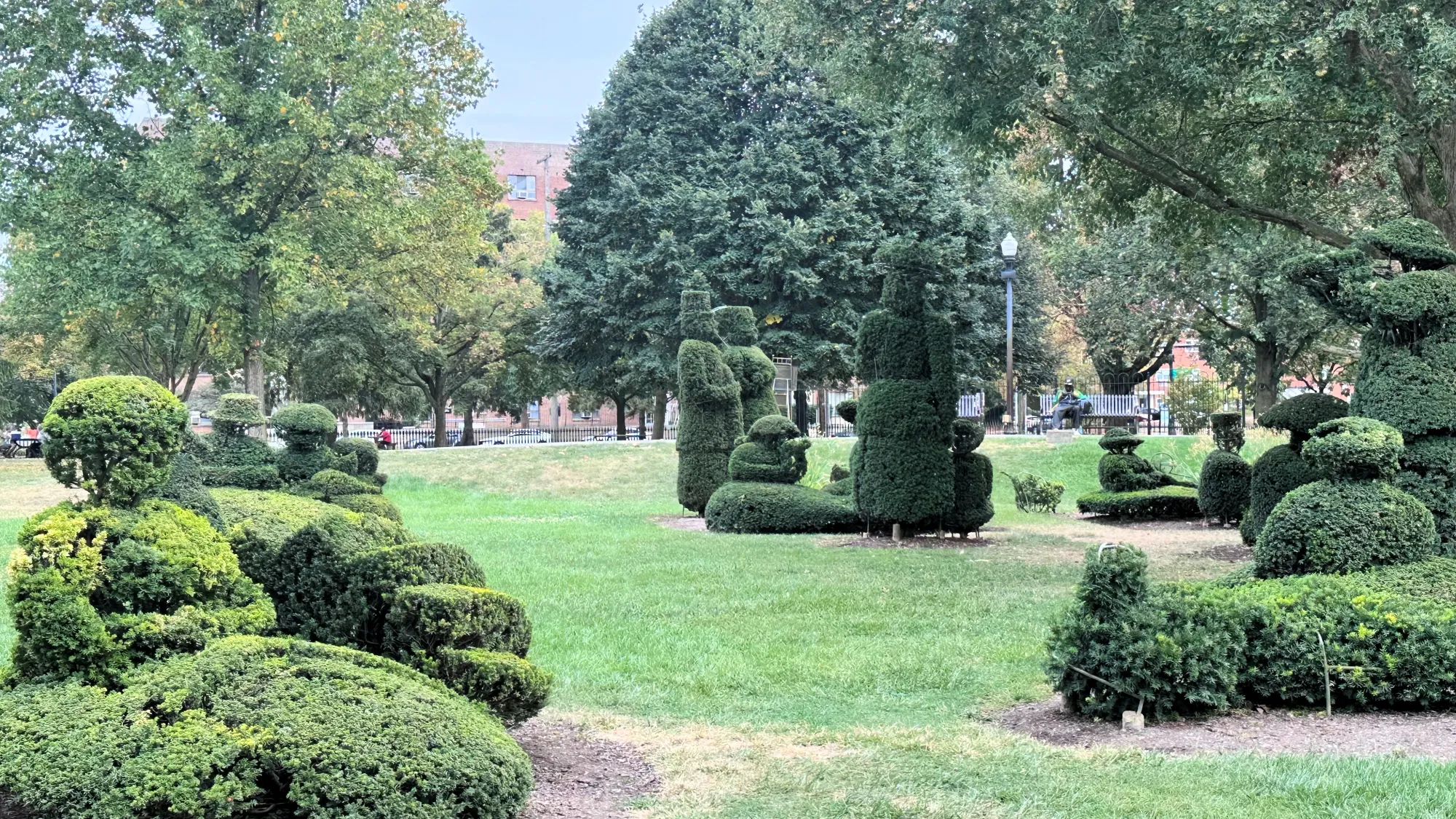
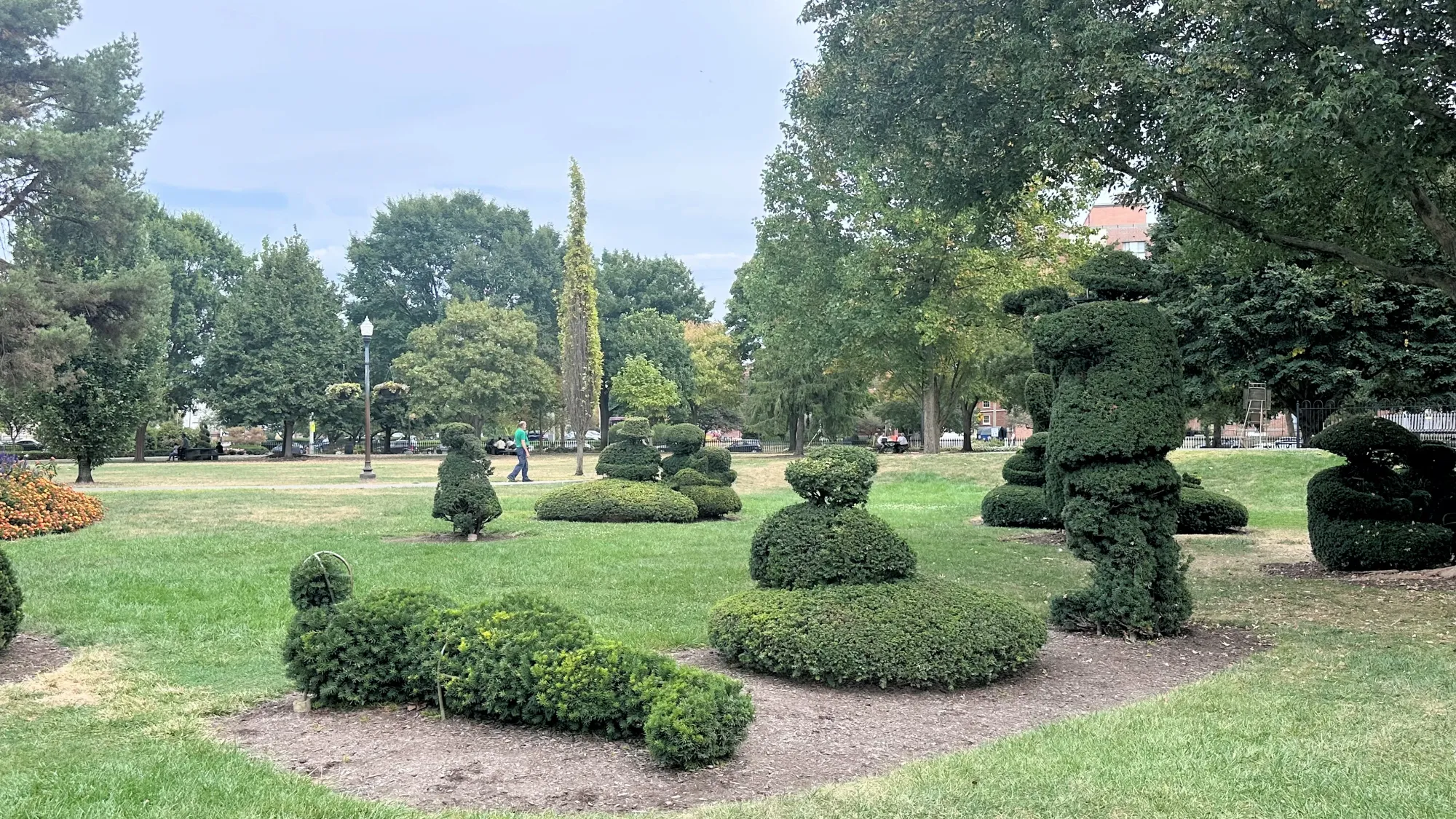
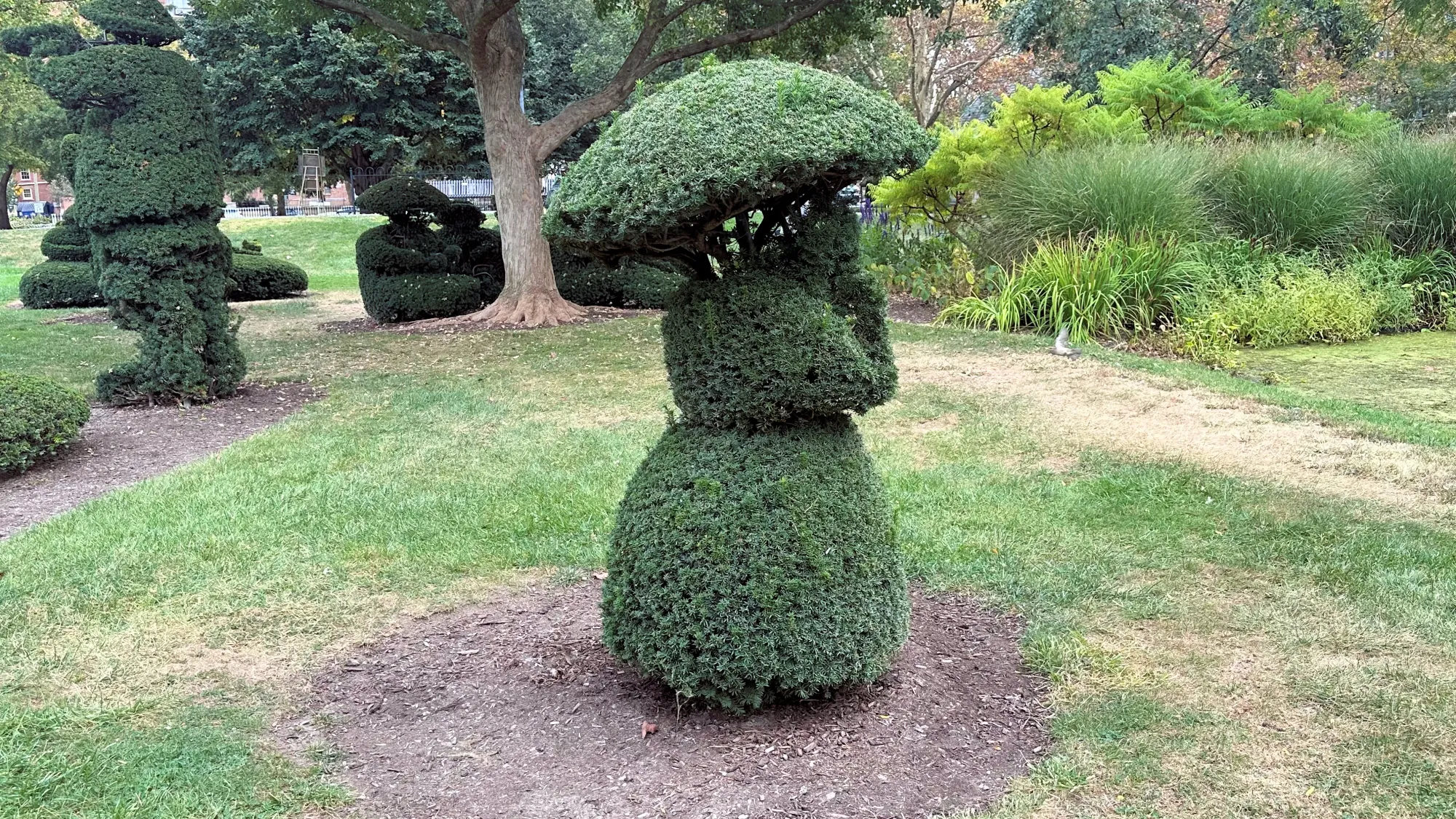
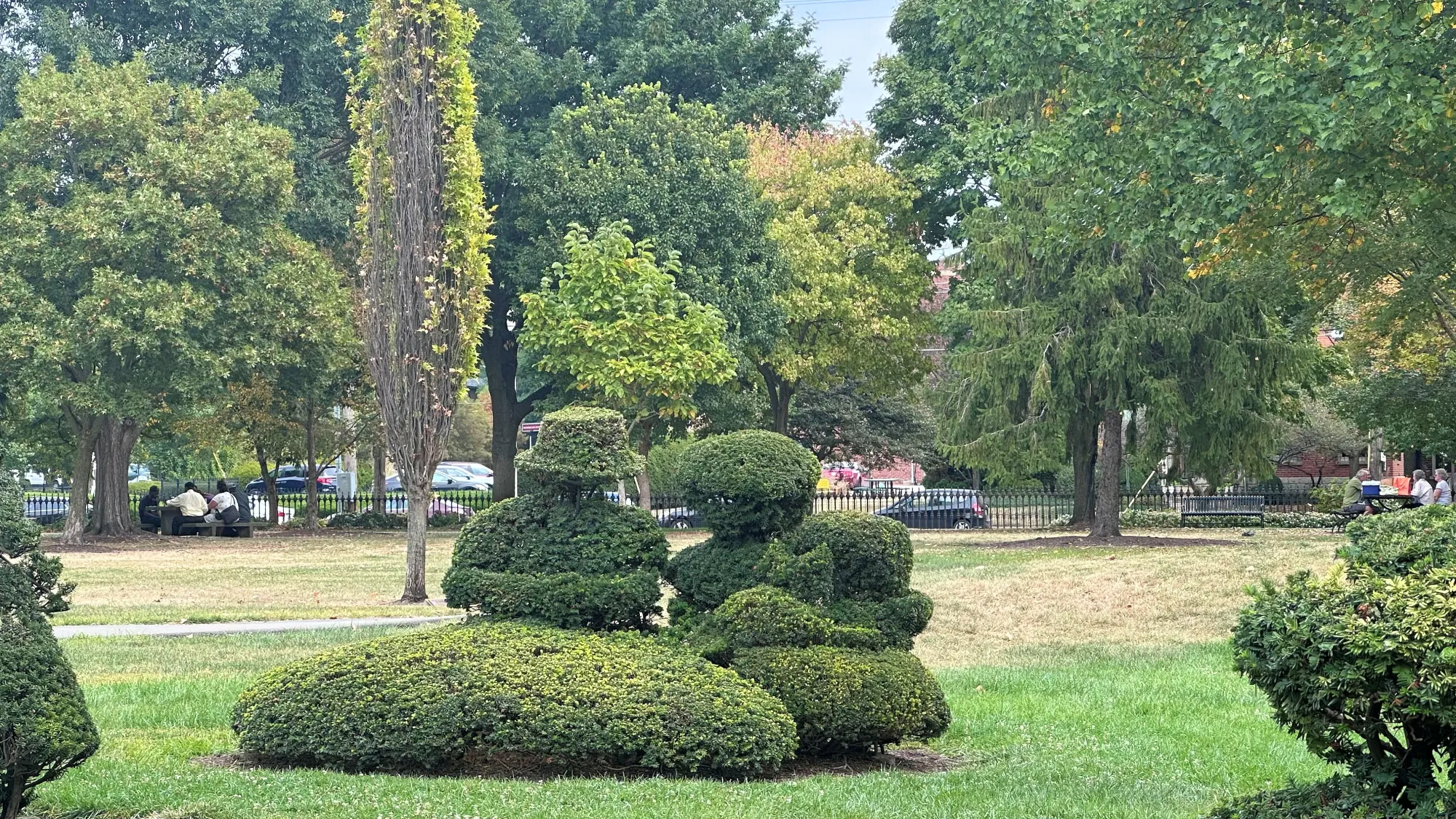
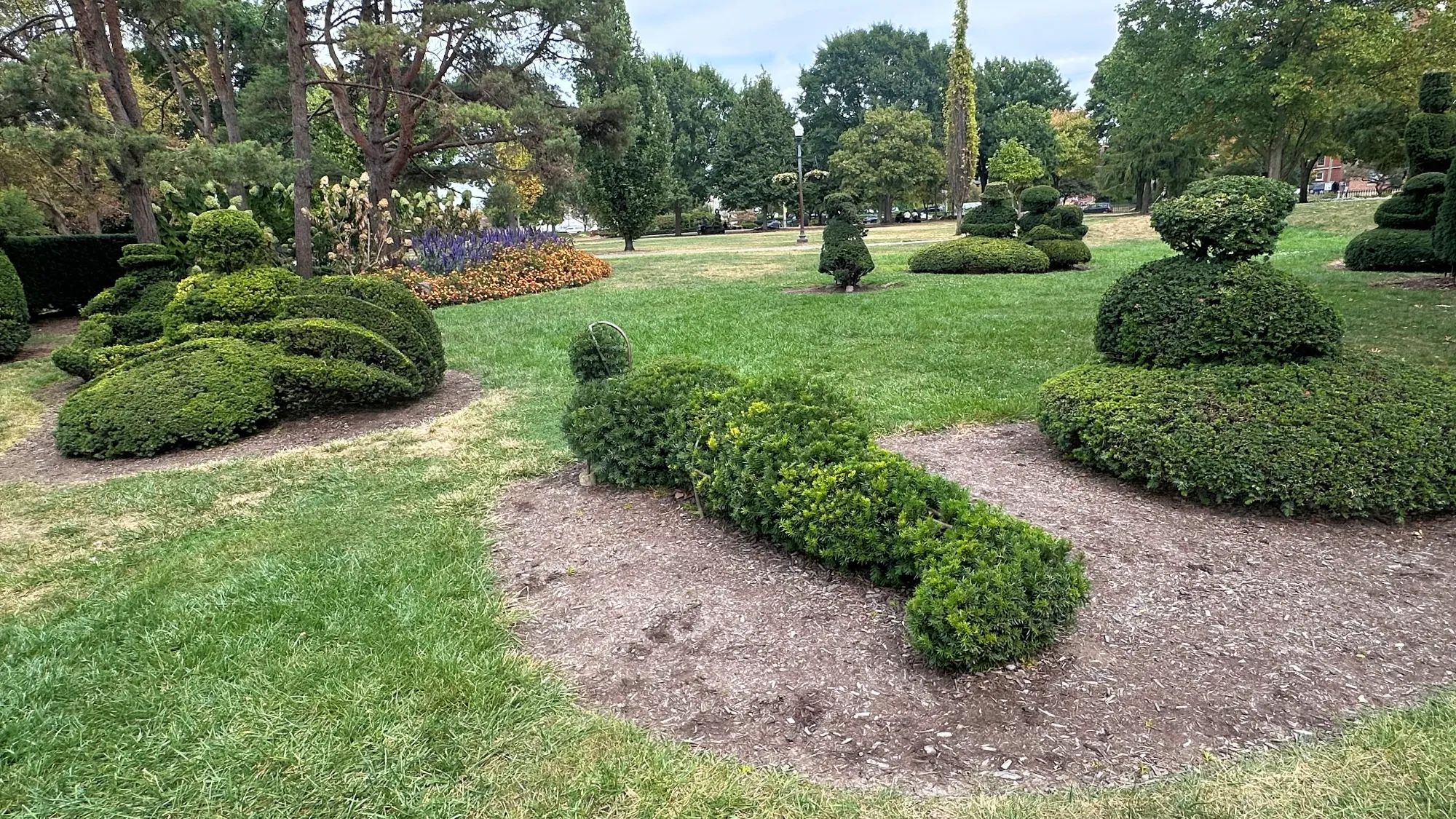
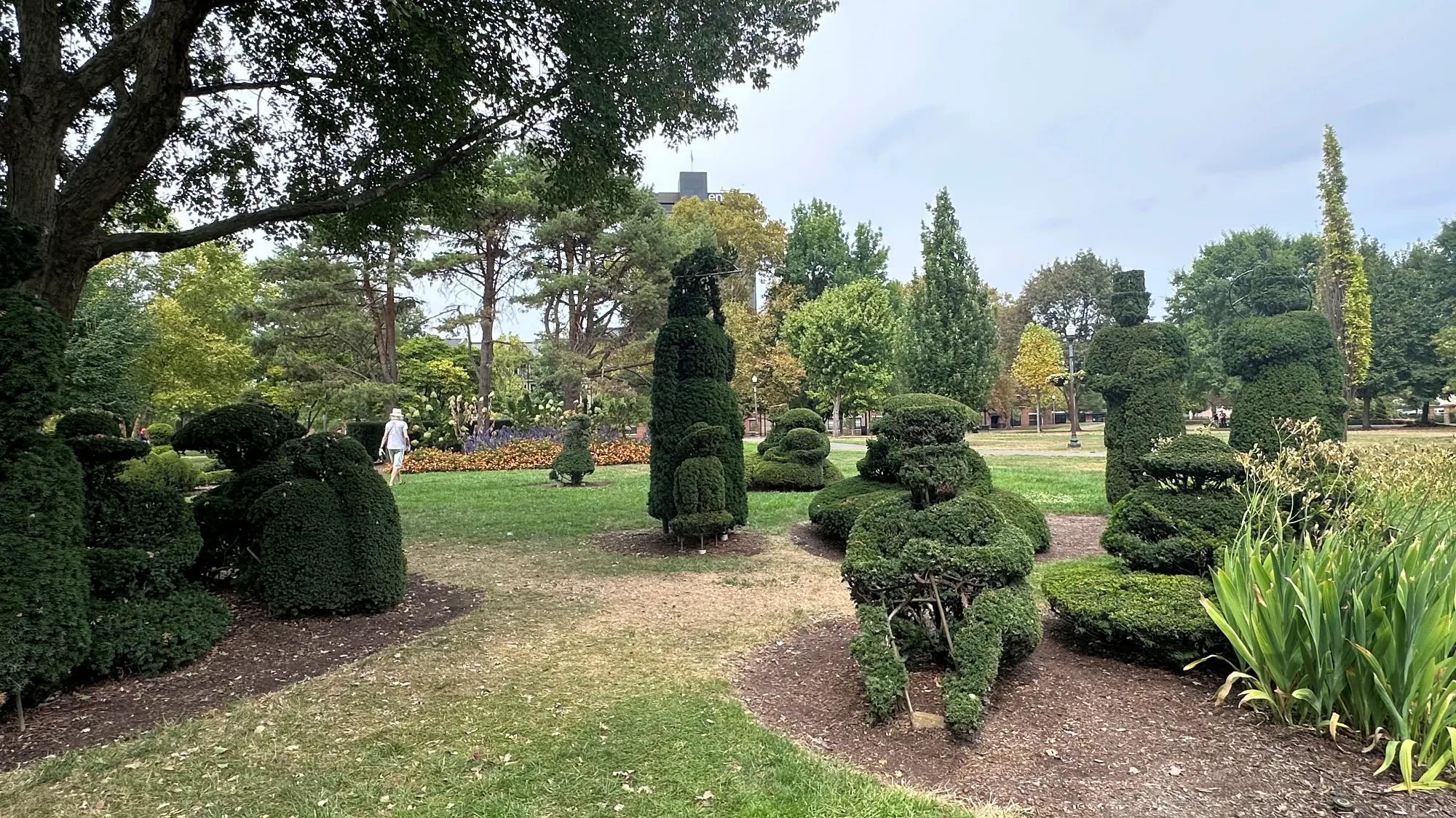
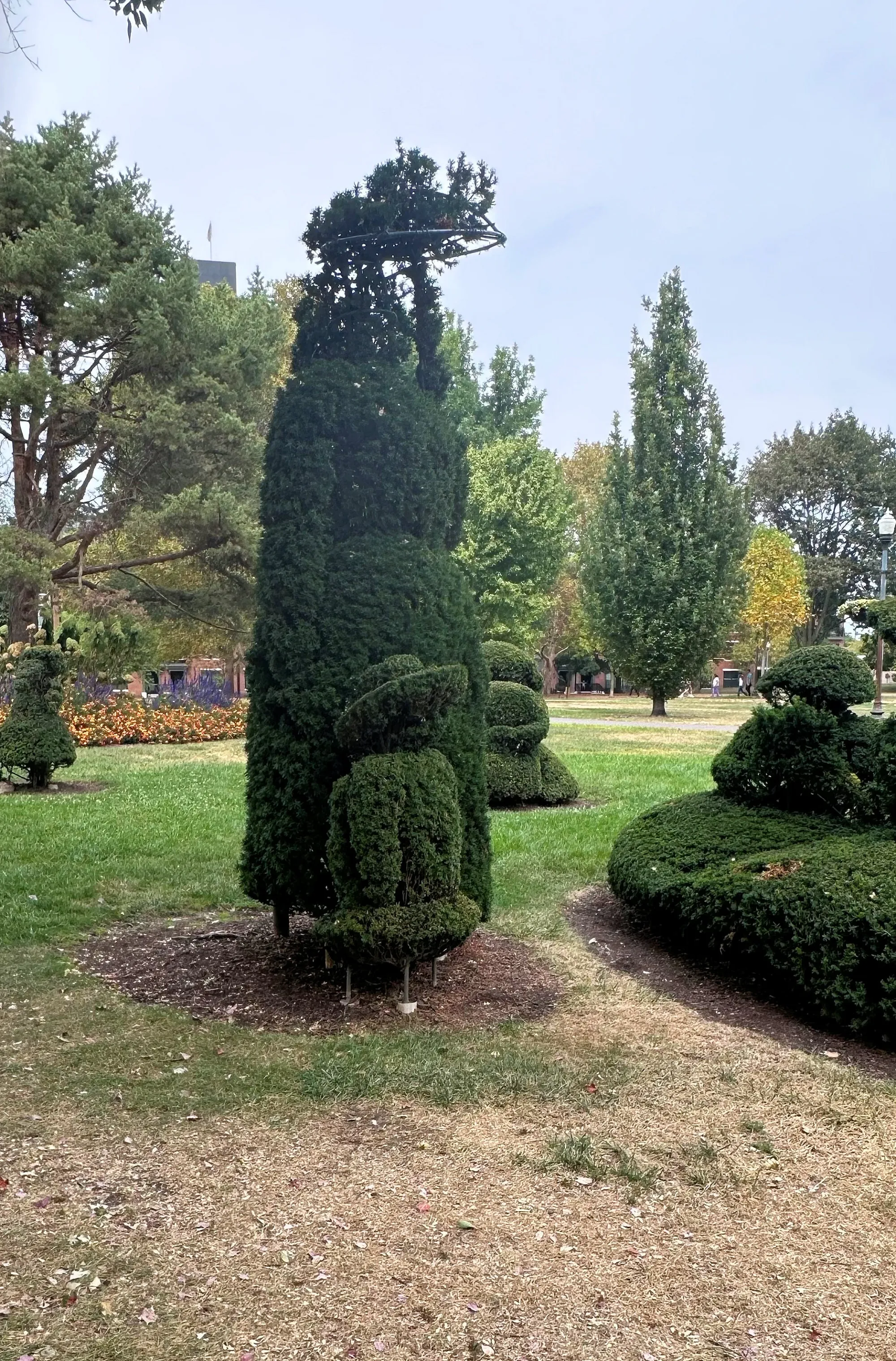
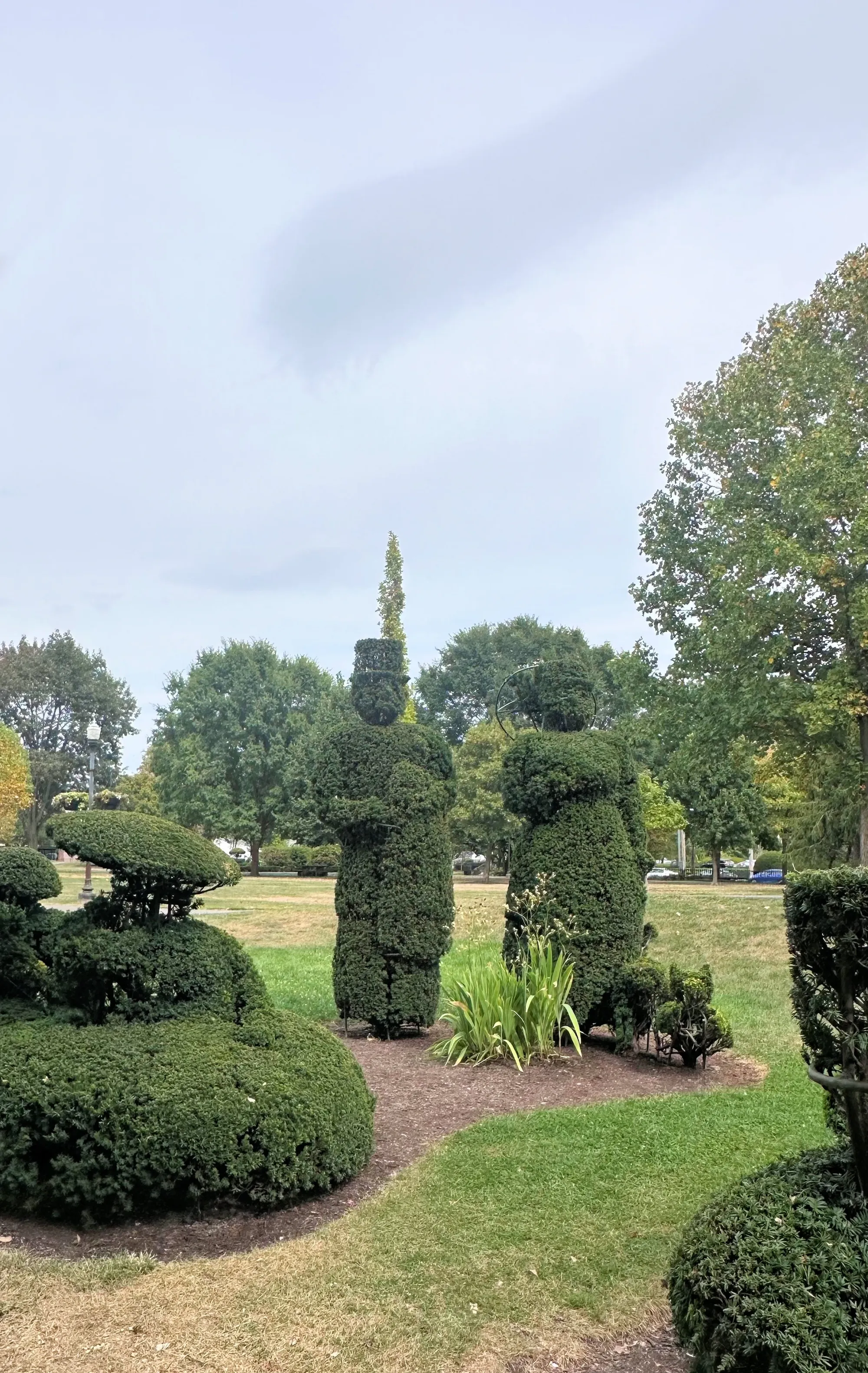
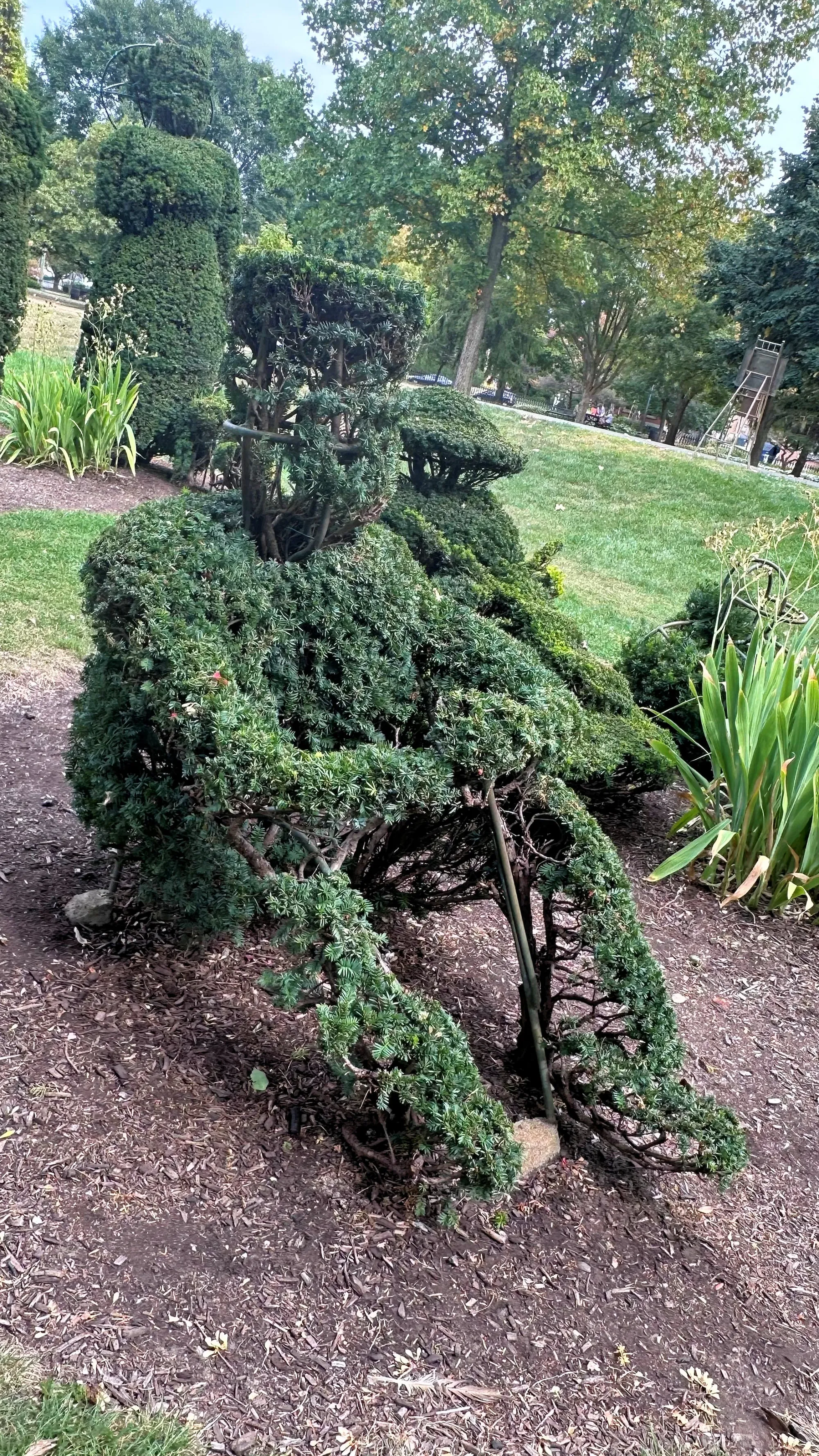
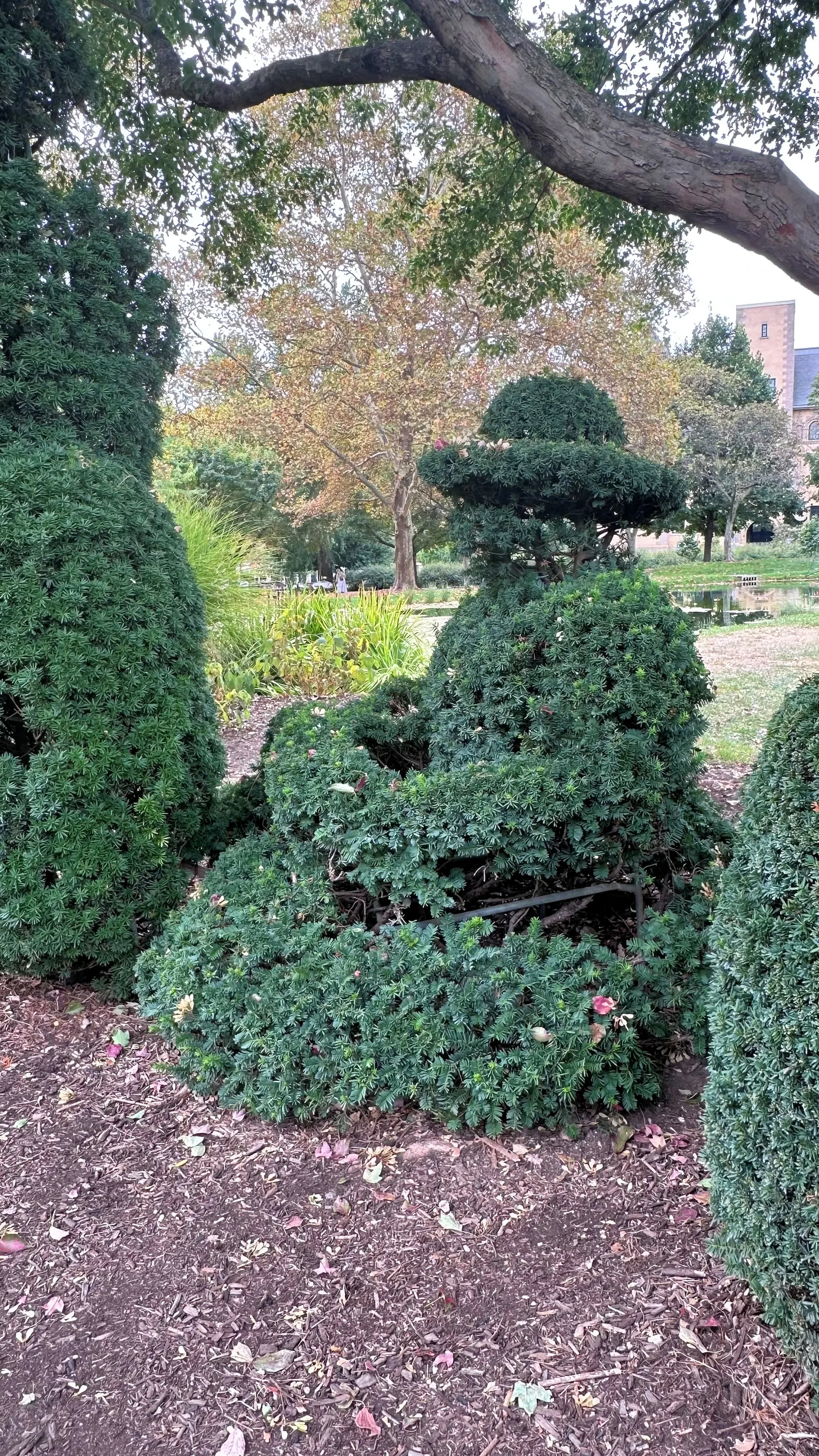
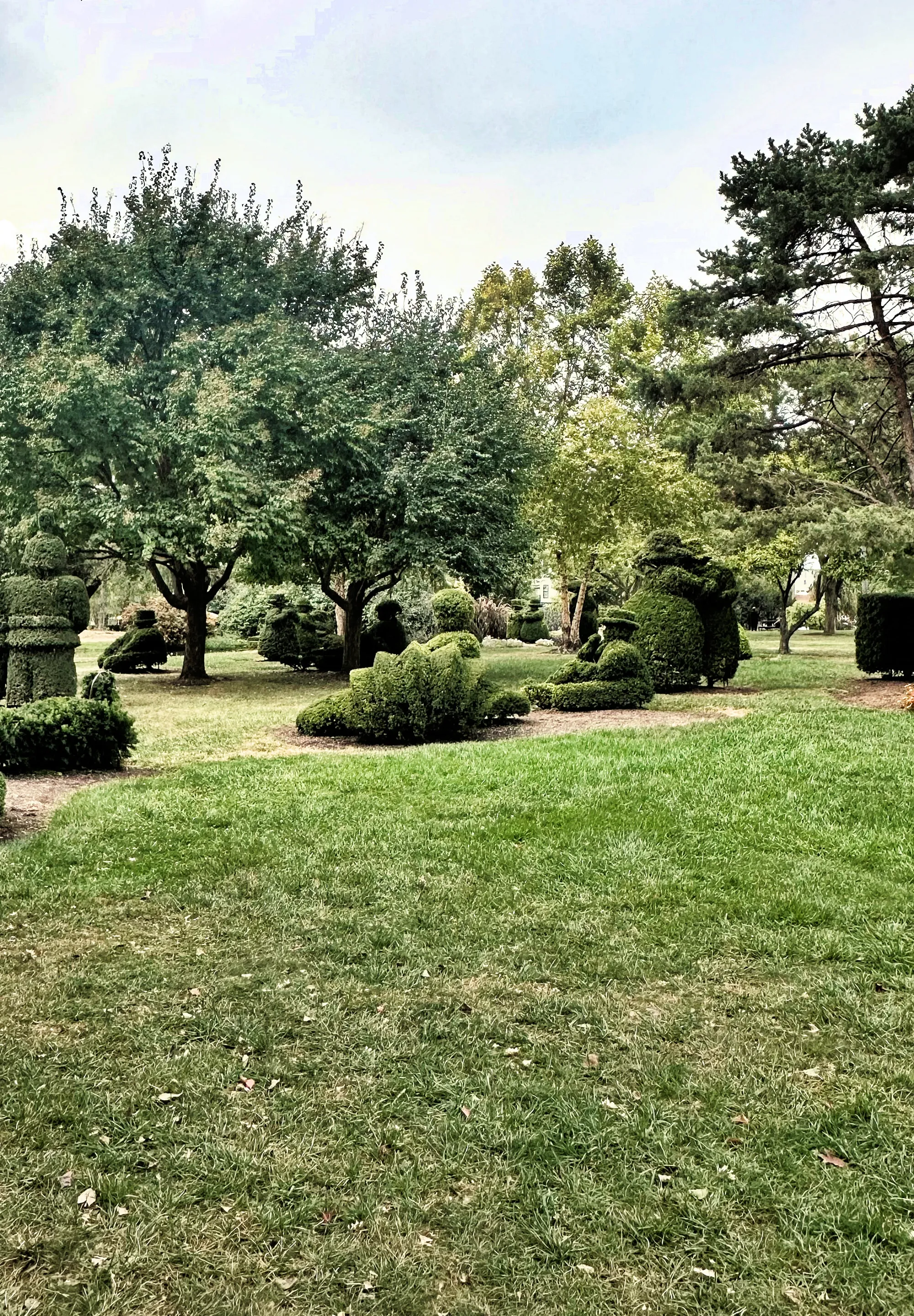
The gatehouse, near the southeast corner of the park, is the park's main entrance. The 2,400-square-foot building holds offices, restrooms, and an information desk and gift shop. It was constructed in 1998, designed in brick and resembling a French countryside house to match the park's theme. The building was funded by the City of Columbus, Motorists Mutual Insurance, and the Friends of the Topiary Park.
Location:
Admission to Columbus Topiary Garden & Park is free.
- Open: Daily from sunrise to sunset
- Location: 480 E. Town St. in Columbus, Ohio
- Phone: 614-645-0197
- The park is adjacent to the Main Branch of the Columbus Metropolitan Library system. The branch was renovated around 2015, with one of the architect's goals being to join the library to the park.
Ohio Institution for the Deaf and Dumb
Founded in 1829 as the Ohio Institution for the Education of the Deaf and Dumb, the school purchased 10 acres on East Town Street within a few decades. Initially, it operated in small buildings at various locations due to a lack of funds. In 1832, a new three-story building was constructed on the East Town Street property, and the school moved into it in 1834.
Over the years, several additions were made, and in 1868, a new building replaced the original main structure. Another building, now Cristo Rey Columbus High School, was added in 1899. By 1941, with the facilities in poor condition, the school administrators bought a new campus and relocated there in 1953.
By 1981, the old main building had suffered at least fifteen fires, prompting fire officials to recommend its demolition. The school, art, and gymnasium building were also targeted for demolition, though preservationists managed to save the school building by occupying it until architects and officials agreed it could be preserved. It was added to the National Register of Historic Places in 1984. This designation includes all 10 acres of the former campus.
Historical Context of Deaf and Dumb
In the past, "dumb" referred to being "unable to speak," rather than "stupid," as it's often interpreted today. Deaf individuals, particularly before the advent of sign language education and speech therapy, often did not speak verbally—not due to a lack of thought or communication ability, but because they lacked access to hearing-based spoken language. So, "deaf and dumb" originally meant "unable to hear and unable to speak."
Today, the term "dumb" is more commonly used to mean "stupid" or "lacking intelligence," which reinforces harmful stereotypes. The phrase suggests that deaf individuals are intellectually inferior, which is completely untrue. It also disregards the fact that deaf people have rich and complex languages, such as American Sign Language (ASL) or British Sign Language (BSL), and many are fully capable of speaking or writing.
Respectful and accurate terms today include "Deaf" (with a capital "D" for cultural identity) or "hard of hearing." When relevant, people may also use terms like "nonverbal" or "uses sign language," but only when necessary.
Park Development
The park, initially developed in the mid-1980s as Old Deaf School Park, became Topiary Park through the vision of Columbus artists James and Elaine Mason. It was sculpted in 1989 as a garden exhibit for the 1992 AmeriFlora exhibition. Held at Franklin Park in Columbus from April 20 to October 12, 1992, the $95 million AmeriFlora '92 event covered 88 acres, attracted 5.5 million visitors, and was promoted as the first international flower show in the U.S.
James T. Mason created the only topiary garden inspired by a work of art, while Elaine Mason was the first of many topiarists to maintain the topiaries.
At the top of the hill, a bronze easel stands alongside an image of Seurat’s original painting. Seurat, who pioneered pointillism, used dots of color to create light effects. From this vantage point, the 3-D version of the painting comes to life, with the tallest topiary standing at 12 feet, adding depth and perspective.
Trail / Path Features
The park features paved paths that loop through the garden and around the pond, making it both accessible and stroller friendly. There’s a circular path within the park, along with offshoots leading out on the east side. The grounds include hills and a pond, and given the park’s size, you can likely complete a circuit in 15–30 minutes, depending on how often you pause to take in the scenery.

Conclusion
The Topiary Park is a very serene place to visit, especially from April to November. It is peaceful and a good place to bring a book to read. I love the park and always look forward to visiting it.
